
Bright Angel Lodge (1935) has a natural rustic character, and is a Registered National Historic Landmark. This iconic lodge and its surrounding cabins are rich with cultural history. Over the years it has gone through many transformations – originally a hotel, then a camp and finally a lodge. All of its changes were to accommodate increased visitation after the arrival of the train in 1901. The Bright Angel Lodge History Room displays the genius of architect Mary Colter. Take a closer look at the room’s dramatic rock fireplace. Notice how its’ tall, sloping outlines mirror the cliffs and buttes of the canyon outside. (or mirrors the shape of Zoroaster Temple). Known as the “Geologic Fireplace,” the layered stones of her design were put together in the same geological sequence as the rock found along the Bright Angel trail - from river to rim. 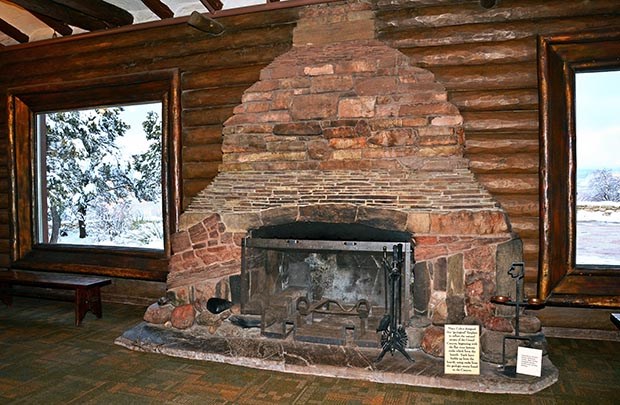
Stacked on each side of the hearth is a collection of water-worn Colorado River rocks. The base of the fireplace consists of dark-colored Vishnu Schist. This granite-veined rock – dated at around 1.7 billion years old – forms the very basement of the North American continent. The next layer of rock represents the Grand Canyon Supergroup –sedimentary and volcanic rocks ranging in age from 800 million to 1.2 billion years old; their tilted appearance caused by the separation of ancient continents. Above the fireplace opening is a distinctive layer of flat-lying sedimentary rocks that give the Grand Canyon its “stairstep” appearance and date from half a million to 250 million years in age. 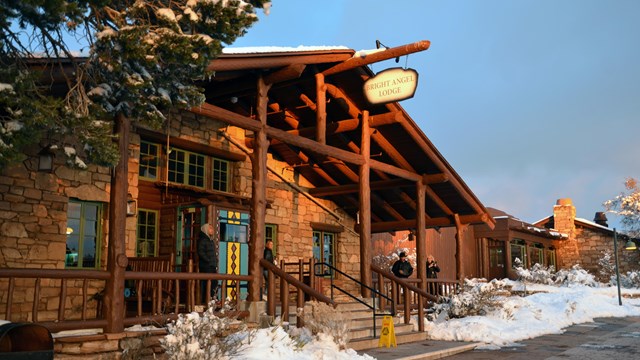
Bright Angel Lodge (1935)
Continue to Bright Angel Lodge photo gallery on Flickr. 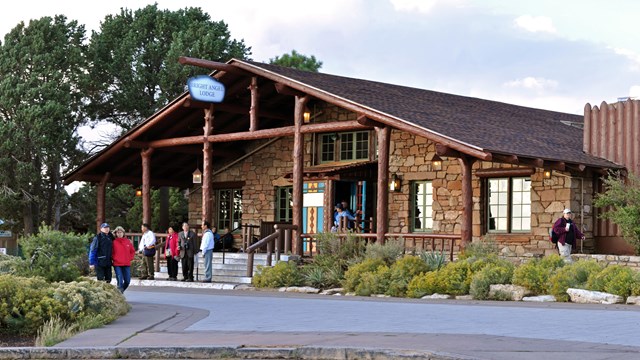
Bright Angel Lodge History Continued
Learn more about the Bright Angel Lodge on Arizona State University's Nature, Culture, and History at Grand Canyon website. 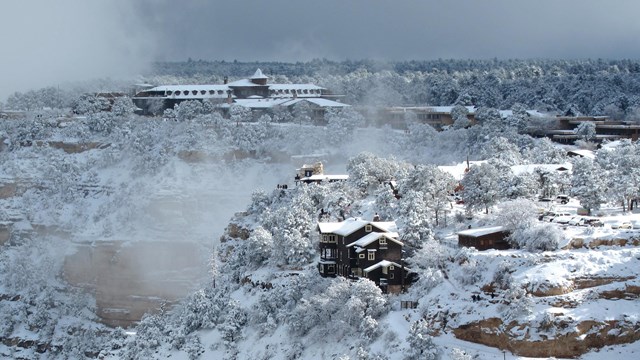
The Historic Village
With the arrival of the First Steam-Powered Train in 1901, the quiet area of the South Rim rapidly expanded into the Grand Canyon Village. 
Mary Colter's Buildings
Mary Colter was the chief architect and decorator for the Fred Harvey Company from 1902 to 1948. 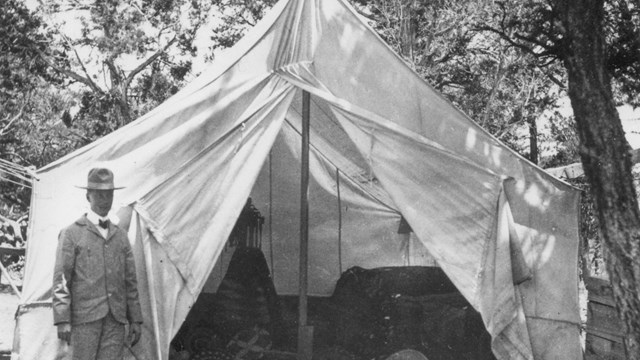
Entrepreneurs
After the Santa Fe Railroad started bringing visitors to the canyon, entrepreneurs came to the canyon to make their fortune. |
Last updated: September 21, 2019
